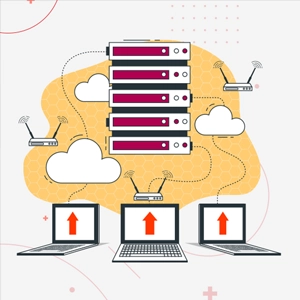Imagine embarking on a grand adventure into uncharted territory. You gather your supplies, map out your route, and assemble a team of skilled individuals. But as you set foot on this new, unfamiliar ground, you realize the need to establish a safe landing zone – a solid foundation that will guide and protect you throughout your journey.
A similar principle applies to cloud computing. A cloud landing zone serves as the bedrock for establishing robust governance and compliance standards in the cloud environment, laying the groundwork for a successful and secure expedition. For senior decision-makers, it is vital to explore how cloud landing zones can enhance regulatory compliance, data security, and credibility for their businesses in the vast cloud landscape.
Understanding cloud landing zones
A cloud landing zone provides organizations with a modular and scalable configuration that is necessary for deploying enterprise workloads in a cloud environment. Almost all companies use the cloud in some shape or form, with a recent global survey of 750 cloud decision-makers and users finding that 87% of cloud-using enterprises have embraced multi-cloud. In addition, 65% of cloud-using enterprises have a heavy usage level of public cloud, though most enterprises adopt a hybrid approach.
With such widespread cloud adoption, having a well-defined landing zone becomes crucial for effective governance and compliance management.
Enhancing governance with policies and controls
Within a cloud landing zone, the implementation of policies and access controls is paramount. Policies define the rules and guidelines for resource provisioning, security configurations, and data handling. Access controls ensure that only authorized users can access and manage cloud resources. It is typical for customers to be inadvertently responsible for almost all security failures in the cloud. Usually, this is because of misconfigurations arising from increasingly complex settings and protocols and the improper use of security controls.
Organizations can avoid these risks and ensure compliance by implementing consistent policies and access restrictions.
Strengthening security with auditing mechanisms
Auditing mechanisms play a crucial role in monitoring and maintaining the security of a cloud landing zone. By regularly auditing cloud activities, organizations can detect potential vulnerabilities, identify security breaches, and take appropriate action by reviewing their cloud operations on a regular basis. According to the Cost of a Data Breach Report 2022, the average cost of a data breach was $4.35 million. Effective auditing practices help organizations in identifying and mitigating security concerns, lowering the likelihood of costly breaches.
Achieving compliance with frameworks
Compliance frameworks are instrumental in ensuring adherence to regulatory requirements and industry standards. Organizations can implement industry-specific compliance frameworks within their cloud landing zone. For example, the Health Insurance Portability and Accountability Act (HIPAA) provides guidelines for healthcare organizations to follow in order to safeguard sensitive patient data. Following these mandates and instructions helps firms in meeting regulatory obligations, protect sensitive data, and retain customer trust.
Ensuring a secure landing zone
Establishing a secure landing zone within an enterprise cloud platform offers tremendous assurance for organizations. It provides a centralized command and control center for managing and enforcing security policies across the entire cloud infrastructure. This reduces the risk of misconfigurations and illegal access. This kind of centralized control improves visibility and allows for effective resource allocation, cost optimization, and performance monitoring.
Building a roadmap
The benefits of establishing a safe cloud landing zone are quite clear, and yet, it can be further relevant in a cloud-first corporate environment. While it is evident that such a foundation can infuse confidence into an organization’s operations and stakeholders, it can also play a prominent role in building credibility for the business.
The landing zone is the first and most important benchmark to judge the capability of an enterprise’s cloud implementation and capabilities. From implementing policies, access controls, auditing, and compliance to protecting against cyber threats, there are plenty of areas that are bolstered by a secure landing zone. A proactive implementation also shows customers, partners, and regulators that the enterprise values data security and ethics which, in turn, protects its assets and reputation, thereby maintaining stakeholder trust.
In a space as highly dynamic as the cloud, it is crucial to keep innovation at the forefront. A robust cloud landing zone helps an enterprise maximize cloud technologies. Encryption and restricted access enable cloud migration and storage of sensitive data. Scalability, agility, and innovation are enabled through advanced analytics, AI, and collaborative technologies. Innovation also extends to enabling higher levels of management and visibility, which cloud landing zones enable to simplify resource allocation and security. The outcome is a greater understanding of an enterprise’s cloud ecosystem, which can be influential in lowering expenses and making informed decisions.
For a successful digital journey, cloud landing zones are essential. They provide governance, security, and centralized control, all of which lay the foundation for sustained and meaningful success. By embracing the power of a secure landing zone, enterprises can confidently navigate the cloud, knowing that they are ready to prosper in the ever-changing, technology-enabled business paradigm.
Authored By: Vishal Chandane




